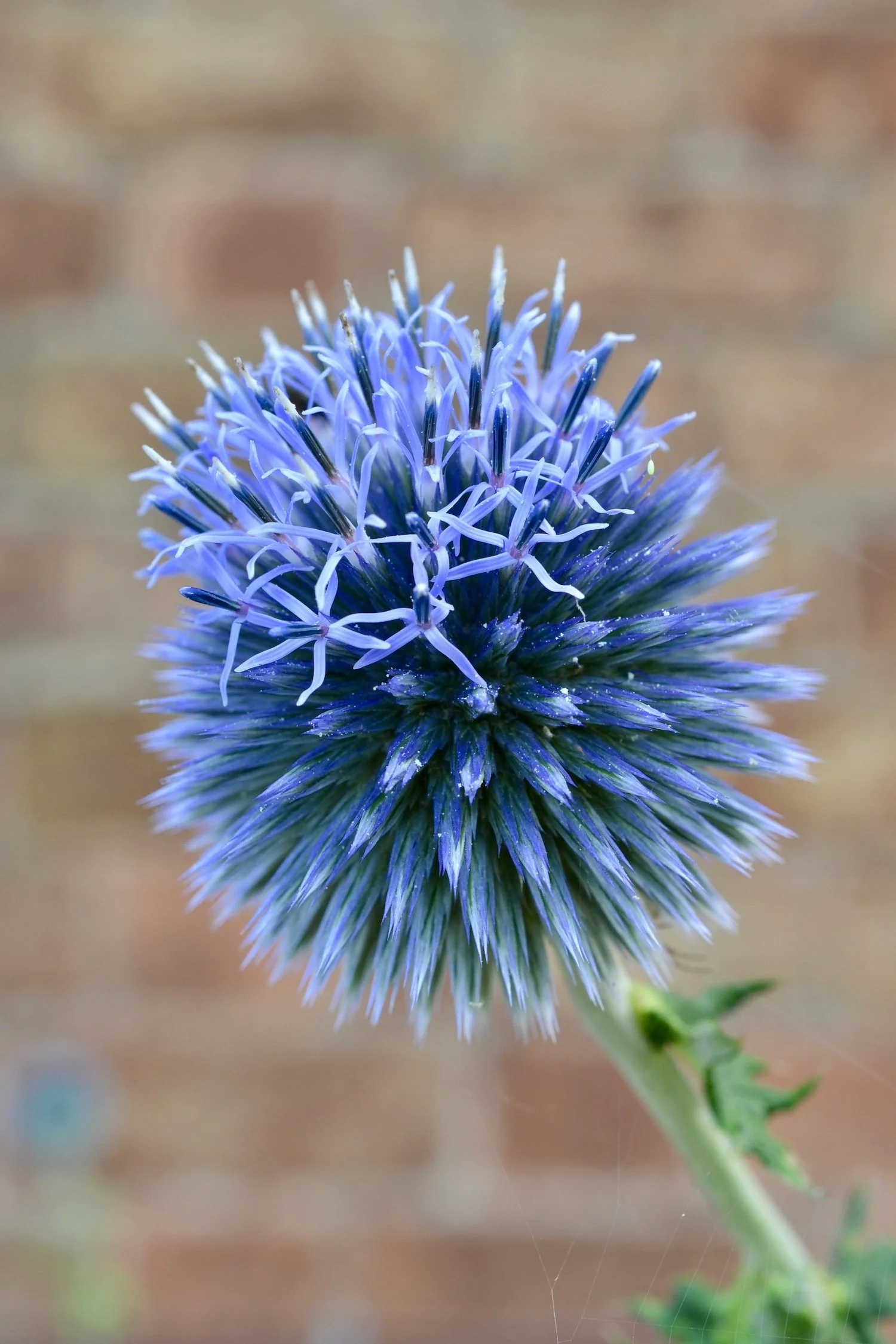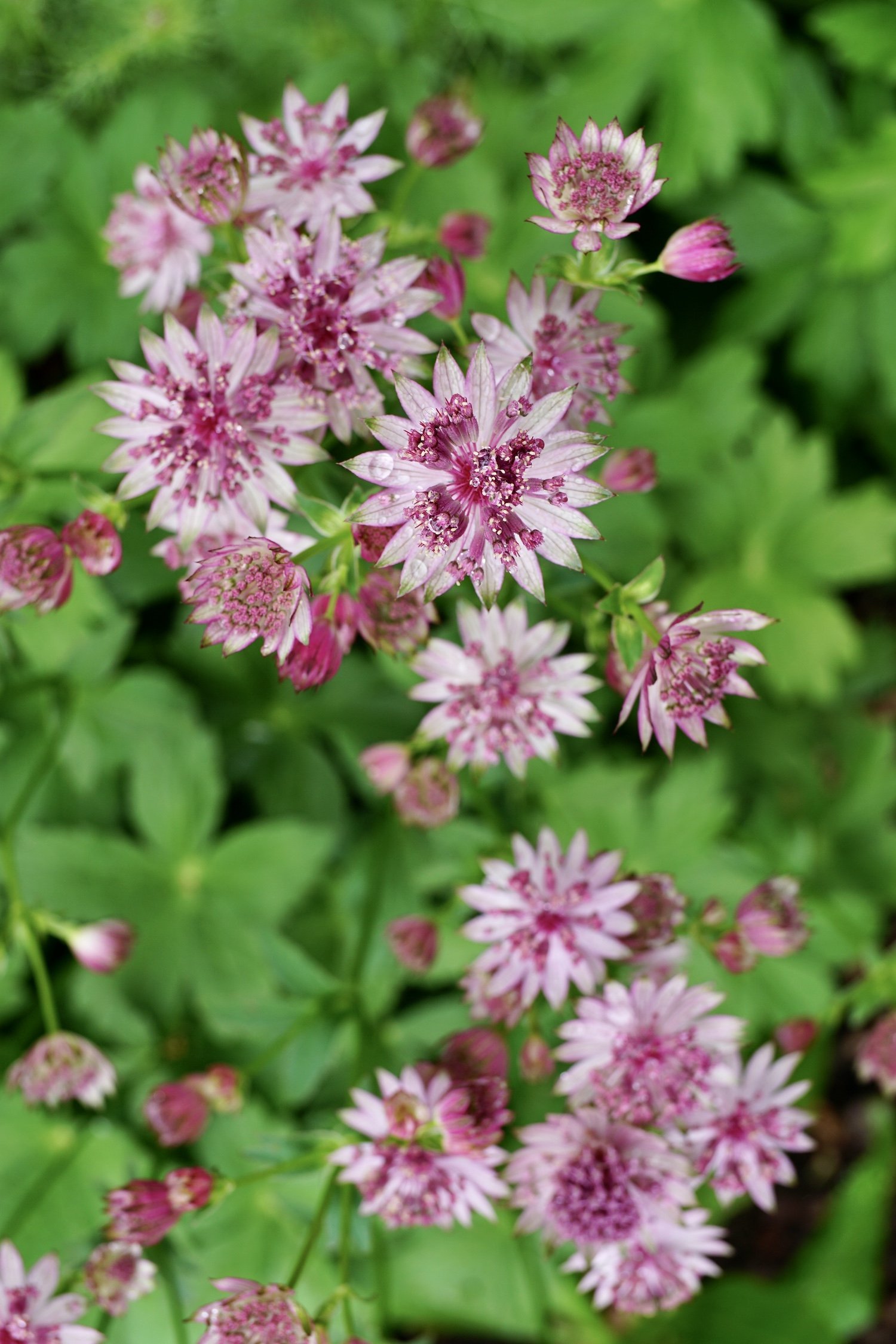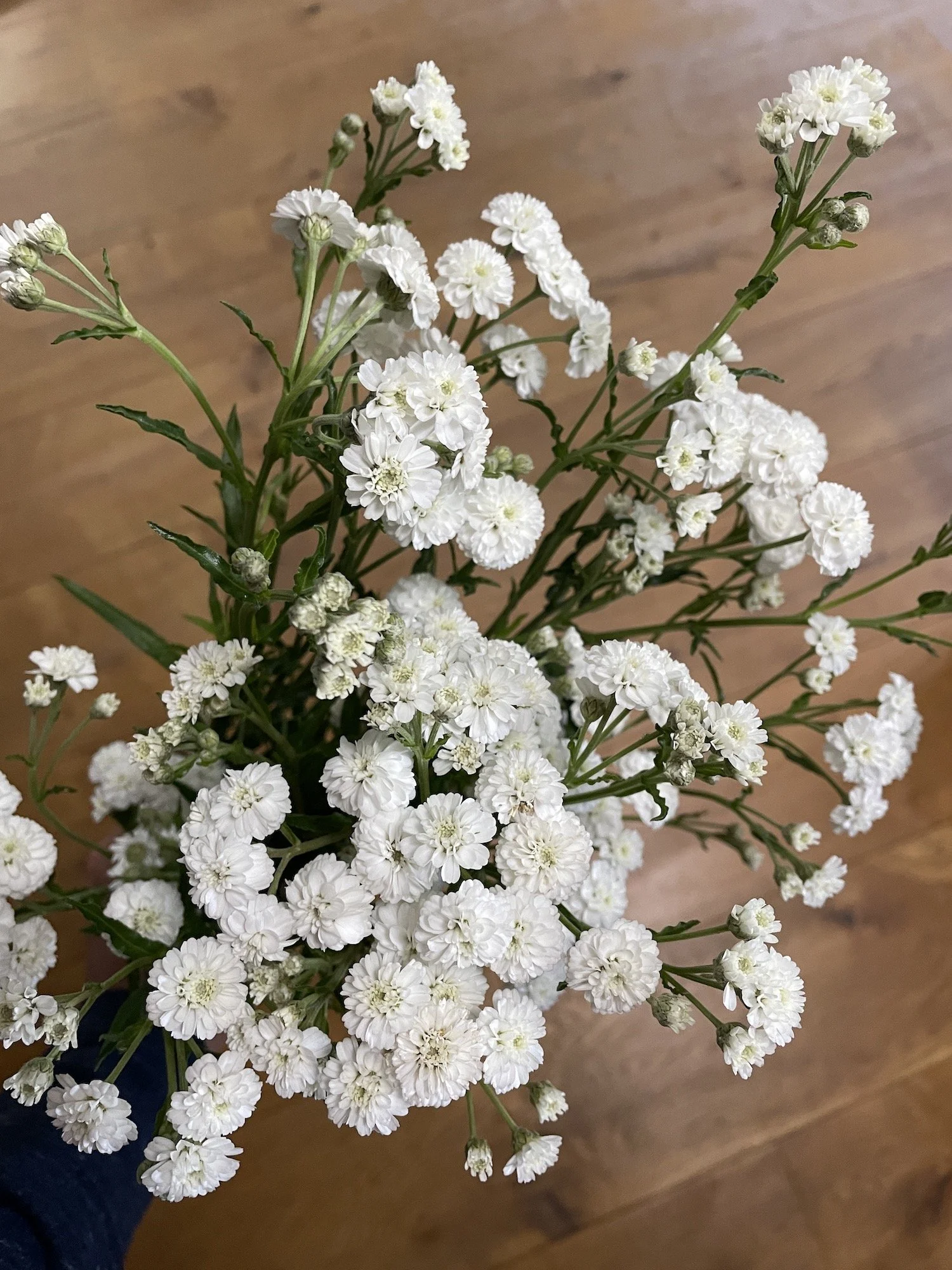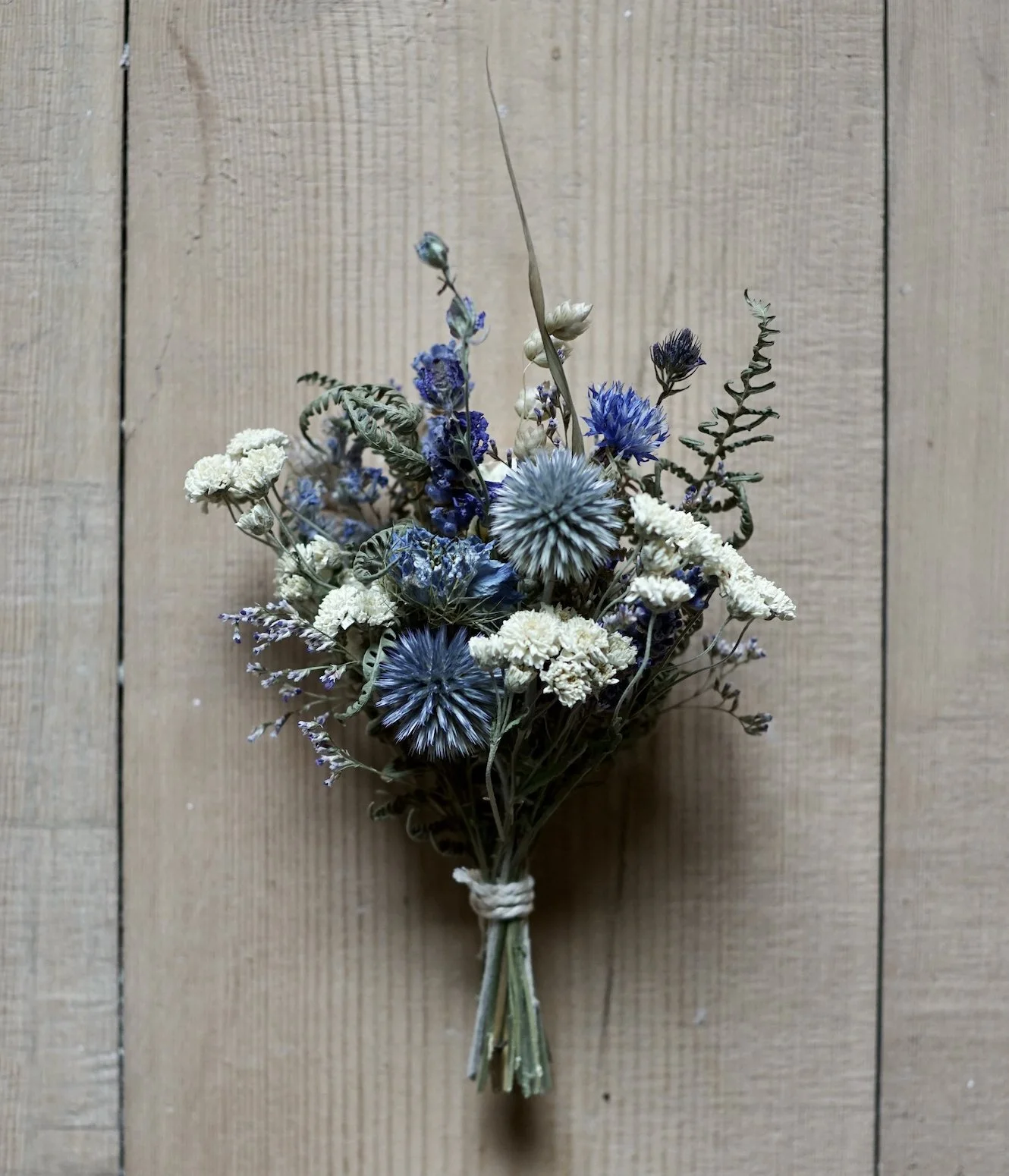Six perennials that make fantastic dried flowers
Lots of perennial flowers dry really well, but here are six to get started with that will give you a variety of shapes, textures and colours.
1. Globe thistle (Echinops ritro)
Their blue or white globe-shaped heads are a delightful addition to dried arrangements. Harvest the globes before the little flowers open otherwise the heads will break apart during or after drying. Hang upside down to dry. Also a great food source for insects so I like to grow enough to let some go to flower. Echinops tolerates poor soil and is easy to propagate by splitting. Warning - they’re prickly!
2. Greater masterwort (Astrantia major)
Pretty star-shaped flowers in pink, white and claret shades. Pick after all of the flowers on a stem have opened - this gives the stems a chance to ripen so there’s less chance of them drooping after drying. Hang upside down to dry. A good plant for part-shade and will self-sow in your garden if you let them.
3. Lady’s mantle (Alchemilla mollis)
Alchemilla mollis is a fab, golden-green, airy filler. Look closely and you’ll see that its floral sprays are covered in teeny tiny star-shaped flowers. I like to cut for drying when there are still a few closed flowers on the stems (they look like little spheres before opening) because the colour is a bit more green. You can keep harvesting after the flowers open but they become more delicate and prone to damage as they age on the plant, and older flowers are more golden in colour. Hang upside down to dry. Alchemilla self-sows easily and the baby plants are easy to transplant to other spots in your (or your friend’s) garden.
4. Sneezewort (Achillea ptarmica) ‘The Pearl’
This is a lovely white filler for dried flower designs. Cut after a fair number of flowers on a stem have opened, but before the oldest flowers start to look too old. I sometimes cut stems just after the first flowers have opened fully (when you can see the daisy-like centres). This gives them the best chance of staying white. Hang upside down to dry. Sneezewort is a spreading plant so is easy to divide or propagate by taking cuttings.
5. Yarrow (Achillea filipendulina)
Large, mustard-yellow flat-topped flowers with a distinctive yarrow-y scent. These impressive flower heads can be used as focal flowers but also look amazing in a vase on their own. Cut after all the tiny flowers have opened (you need to look closely) or they will go limp after cutting and result in a less open shape. Hang upside down to dry. I love it when the flower stems lean as they grow in the garden because they end up giving me long stems with gentle, pleasing curves. I often get a second flush of small flower heads after my first harvest - these are perfect for delicate posies or boutonnieres.
6. Herbaceous peony (Paeonia lactiflora)
Peonies can be a little tricky to dry, but when it works, the results are stunning. The colours are beautiful and the petals take on a delicate, crepe-papery texture. They also retain some of their sweet scent. I’ve found that the best time for cutting is just after all the petals have unfurled. Until the flower is fully open, the many petals form a ball in the centre, and if I try to dry them when the inner petals are still in a ball, there’s a much greater chance they’ll go brown or even rot. Also be careful to check there’s no water caught in between the petals as that will cause rotting as well. If I want to be sure my peonies are water-free before drying, or if I know it’s going to rain, I cut them a few days early and leave them to open in a vase of water in my house.
For me, the most successful way of drying peonies has been hanging them upside down. I’ve tried the evaporation method (leaving them in a small amount of water in a vase) which a few other online tutorials suggest, but it just didn’t work very well for me. Deep pink peonies dry to a superb colour and are the ones I’ve had the most success with. This year was the first time I managed to dry pale pink ones without them going brown (hooray!). I haven’t yet cracked the secret to drying white ones - please let me know if you have!
Do you dry perennial flowers? I’d love to hear your favourites!













